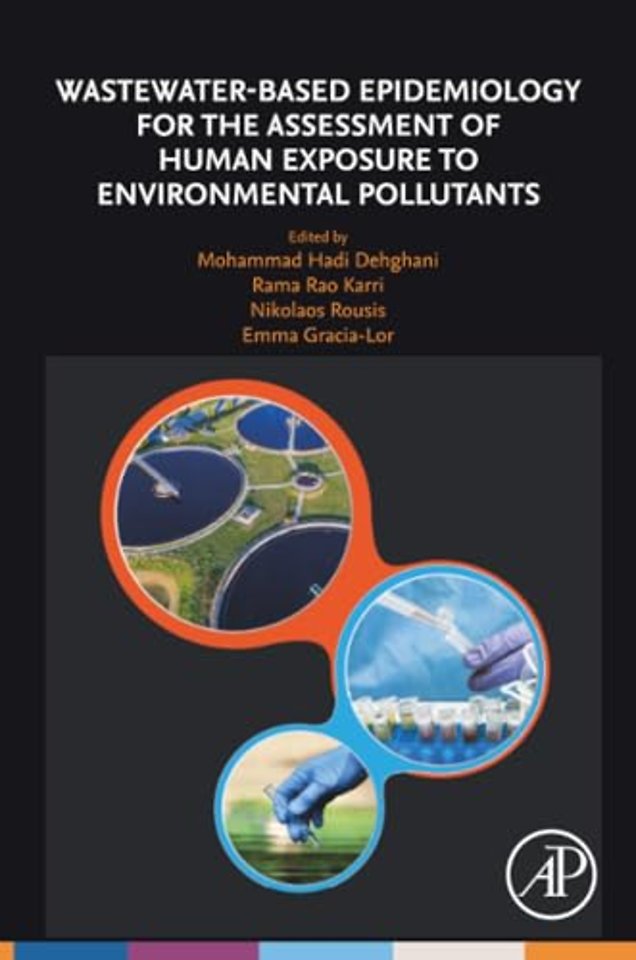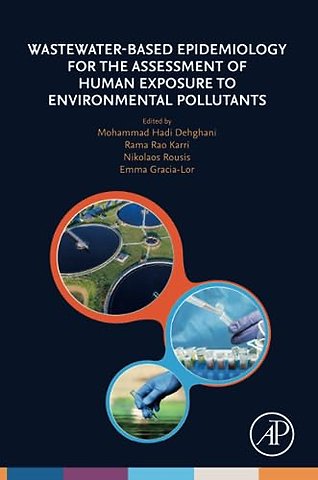Contributors <br>About the editors <br>Preface <br>Acknowledgments <br><br>1. Wastewater-based epidemiology: Evidence mapping toward identifying emerging areas of research<br>Mina Aghaei, Masud Yunesian, Hosna Janjani and Mohammad Hadi Dehghani<br><br>1.1 Introduction <br>1.2 Material and methods <br>1.3 Results and discussion <br>1.4 Challenges and limitations <br>1.5 Conclusion <br>Conflict of interest <br>Acknowledgment <br>References <br><br>2. Moving beyond wastewater analysis toward epidemiology<br>Cobus Gerber, Emma L. Jaunay, Bradley S. Simpson and Jason M. White<br><br>2.1 Introduction <br>2.2 Drug consumption, metabolism, and excretion <br>2.3 Wastewater sampling and analysis <br>2.4 Beyond analysis toward epidemiology <br>2.5 Conclusions <br>References <br><br>3. Sampling techniques in wastewater-based epidemiology approach<br>Lilian Feltraco Lizot, Marcos Frank Bastiani, Camila Favretto de Souza, Roberta Zilles Hahn and Rafael Linden<br><br>3.1 Introduction <br>3.2 Active sampling <br>3.3 Passive sampling <br>3.4 Conclusion <br>References <br><br>4. Assessment of in-sample and in-sewer stability of biomarkers in wastewater-based epidemiology: an important step<br>Jianfa Gao, Jake W. O’Brien, Jiaying Li, Phil Choi, Yijing Li and Phong K. Thai<br><br>4.1 Introduction <br>4.2 Methodology used to evaluate biomarker stability <br>4.3 In-sewer stabilities of biomarkers <br>4.4 In-sample stability of biomarkers and the selection of preservative methods <br>4.5 Factors affecting the degradation of biomarkers <br>4.6 Implications for wastewater-based epidemiology <br>4.7 Conclusions <br>Acknowledgement <br>References <br><br>5. Population biomarkers for wastewater-based epidemiology<br>Jake W. O’Brien, Phong K. Thai and Benjamin J. Tscharke<br><br>5.1 Introduction <br>5.2 Flowdthe first proposed wastewater population biomarker <br>5.3 What makes a good wastewater-based epidemiology population marker? <br>5.4 Summary and perspective: continuing the quest for identifying population biomarkers <br>Acknowledgements <br>References <br><br>6. Wastewater-based epidemiology through pharmaceuticals as biochemical markers and associated challenges<br>Charu Juneja, Purusottam Tripathy, Om Prakash, Deepak Panchal, Abhishek Sharma, Ritesh Vijay and Sukdeb Pal<br><br>6.1 Introduction <br>6.2 Water fingerprinting through WBE: a new approach to evaluating public health <br>6.3 Biomarkers of pharmaceuticals and personal care products <br>6.4 Population biomarker: a paradigm for PPCPs prevalence <br>6.5 Limitations <br>6.6 Conclusion <br>Acknowledgments <br>References <br><br>7. The complexities associated with the detection of new psychoactive substances in wastewater<br>Richard Bade, Dhayaalini Nadarajan and Cobus Gerber<br><br>7.1 Introduction <br>7.2 Analytical methods <br>7.3 Considerations for future methods <br>7.4 Conclusion <br>References <br><br>8. Wastewater-based epidemiology for assessing and monitoring human exposure to pesticides<br>Evsen Yavuz Guzel, Asli Atasoy Aydin and Nebile Daglioglu<br><br>8.1 Introduction <br>8.2 Pesticides groups <br>8.3 Analytical method <br>8.4 Stability of parent pesticides and their metabolites in wastewater <br>8.5 Human risk assessment <br>8.6 Limitations and future research needs <br>8.7 Conclusion <br>References <br><br>9. Expansion and diversification of wastewater-based epidemiology strategies in pandemic conditions to serve immediate public health goals<br>Erin M. Driver, Devin A. Bowes and Rolf U. Halden<br><br>9.1 Introduction <br>9.2 Materials and methods <br>9.3 Results and discussion <br>9.4 Conclusion <br>References <br><br>10. Viral surveillance of wastewater as a promising tool to assess the spread of pathogens in the population: the experience of SARS-CoV-2<br>Giulia Salmoiraghi, Silvia Schiarea, Laura Pellegrinelli, Valeria Primache, Sandro Binda, Elena Pariani, Giovanni Nattino, Guido Bertolini, Francesca Pizza, Ettore Zuccato and Sara Castiglioni<br><br>10.1 Introduction <br>10.2 Aim of the study <br>10.3 Material and methods <br>10.4 Results and discussion <br>10.5 Conclusion <br>Acknowledgments <br>References <br><br>Index

